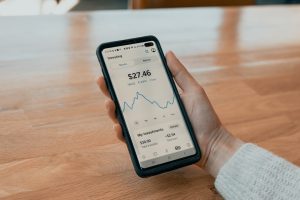Forex trading can be a lucrative venture for investors looking to grow their wealth. However, before jumping into the market, it’s essential to understand how much money is needed to control $10,000 in forex currency. This article will explain the different margin requirements and leverage options available to forex traders and the associated costs.
Margin Requirements
Margin is the amount of money a trader must deposit to open a position. Forex brokers require a margin to cover any potential losses that may occur if the market moves against the trader. The margin requirement is expressed as a percentage of the trade size and is known as the margin rate.
The margin requirement varies depending on the currency pair being traded and the forex broker. Typically, the margin requirement for major currency pairs, such as EUR/USD, USD/JPY, and GBP/USD, is around 2% to 3%. This means that to control $10,000 in forex currency, the trader would need to deposit $200 to $300 as margin.
However, the margin requirement can increase for minor and exotic currency pairs, with some brokers requiring up to 20% margin. Therefore, it’s crucial to check the margin requirements with the broker before opening a position.
Leverage Options
Leverage is another essential factor to consider when trading forex. It allows traders to control a more significant position size than their account balance would typically allow. For example, a trader with $1,000 in their account could control a $10,000 position size with a leverage of 10:1.
Forex brokers offer various leverage options, with the most common being 50:1, 100:1, and 200:1. The higher the leverage, the more significant the position size a trader can control with their account balance. However, higher leverage also means higher risk, as the potential for losses is magnified.
To control $10,000 in forex currency with a leverage of 50:1, the trader would need to deposit $200 as margin, as mentioned earlier. However, if the trader chose to use a leverage of 100:1, they would only need to deposit $100 as margin. Similarly, with a leverage of 200:1, the margin requirement would reduce to $50.
Costs Associated with Trading Forex
In addition to the margin requirement and leverage options, forex traders need to consider the costs associated with trading. These costs include spreads, commissions, and overnight fees.
Spreads are the difference between the bid and ask price of a currency pair, and they vary depending on the broker and currency pair being traded. For example, the spread for the EUR/USD currency pair could be as low as 0.5 pips with some brokers, while others may charge a spread of 2 pips or more.
Commissions are another cost associated with trading forex, and they are charged by some brokers. The commission is usually a fixed dollar amount per lot traded or a percentage of the trade size.
Overnight fees, or swap rates, are charged when a forex position is held overnight. The fee is based on the interest rate differential between the two currencies in the pair being traded and can be either positive or negative, depending on the direction of the trade.
Conclusion
In conclusion, to control $10,000 in forex currency, the trader would need to deposit between $200 and $300 as margin, depending on the margin requirement set by the broker. The leverage option chosen by the trader would also affect the margin requirement, with higher leverage requiring a lower margin.
Forex traders must also consider the costs associated with trading, such as spreads, commissions, and overnight fees, as they can significantly impact the profitability of a trade. Therefore, it’s essential to choose a forex broker that offers competitive pricing and transparent fees to maximize profits and minimize costs.





